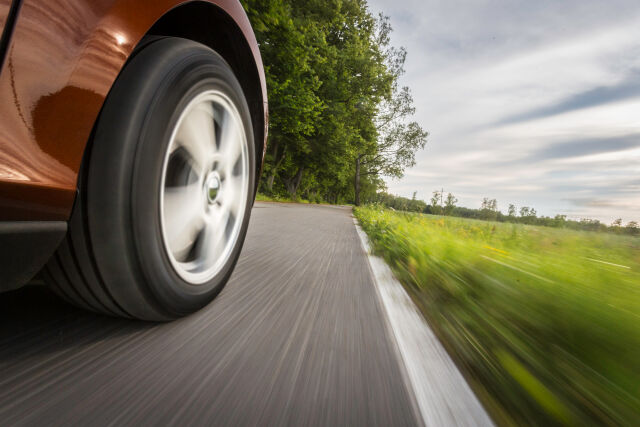Thu December 3 09:27 am 2020 in category Articles
Nokian Tyres has made a promise to protect the environment – this is how we are reducing our CO2 emissions

The main cause of global warming is the increased concentration of carbon dioxide (CO2) and other greenhouse gases in the atmosphere. Alongside nations, large companies play a key role in fighting global warming.
Glaciers around the world have started melting at an accelerating rate as a result of global warming. The main cause of this exceptional warming is the increased concentration of carbon dioxide (CO2) and other greenhouse gases in the atmosphere. The CO2 content in the atmosphere is now 30% higher than the historical average.
Alongside nations, large companies play a key role in implementing solutions to quickly reduce the CO2 emission levels. Many experts consider companies to be crucial to these efforts, as they can provide quick and determined solutions.
Four esteemed international organizations (including the UN and the WWF) lead the Science Based Targets initiative (SBT) that aims to have companies commit to ambitious targets for reducing emissions. At the moment, nearly 1100 companies have made the decision to seek approval for their emission reduction targets from the SBT’s scientific assessment board.
Nokian Tyres is the first company in the tire industry to receive SBTi approval for its emission reduction targets. The approval was published in May 2020 and the targets were later updated at the SBTi’s request.
What are our targets and what do they mean in practice?
As a background, we have already been working for over ten years in order to reduce our greenhouse gas emissions. We have achieved major improvements in reducing the rolling resistance of our tires and emissions from our factories. The rolling resistance of tires, which is one of the factors affecting fuel economy, has been reduced by an average of 8% from the 2013 level, and if we choose 2005 as the benchmark, the improvement has been approximately 20%. Factory CO2 emissions per tire have been reduced by 44% between 2013 and 2019.
So far, we have been setting our own emission reduction targets for our operations and the products that we manufacture. The new emission reduction targets, aligned with the SBT program, will greatly extend the impact of our operations, as they will also affect our partners. Now, our goal is to impact the emissions of over 100 different companies.
The production of the raw materials for tires currently generates four times as much CO2 emissions per tire than the manufacturing of the tires themselves. We aim to reduce emissions from tire raw material production by 25% between 2018 and 2030. Achieving this goal requires that our raw material producers implement their own actions in order to reduce emissions. These changes typically include transitioning to zero or low-emission energy and improving the energy efficiency of the entire production process. We can also favor raw materials that produce lower emissions when choosing materials and suppliers.
Transporting raw materials and finished tires creates substantial CO2 emissions. The entire logistics industry, in land, sea, and air transport alike, is actively seeking means to reduce emissions. Increasing the share of biofuels, improving the efficiency of engines, and optimizing routes further are key methods in this. In logistics, we also aim to reduce CO2 emissions by 25% per tire between 2018 and 2030. This is a challenging target and achieving it requires a steady improvement of 2.4% per year.
Cars generate CO2 emissions as a combustion product of their fuel. In a typical passenger car, one sixth of this results from the energy consumed by the rolling resistance of tires. If a vehicle’s CO2 emissions are, say, 150 g/km, the tires amount to 25 g/km.
We aim to reduce CO2 emissions from tire use by 25% between 2018 and 2030. This improvement will have the largest impact on reducing Nokian Tyres’ global CO2 emissions, as our tires are used on millions of vehicles.
As our fourth target pursuant to the SBT program, we aim to cut CO2 emissions from the energy that we purchase and produce by 52% per single tire between 2015 and 2030. We have already achieved a part of this target with the changes made in recent years. A reduction of 52% means that most of the energy that we purchase is low-emission or zero-emission and produced with renewable forms of energy, for example. At our Nokia factory, nearly all of the energy comes from renewable sources. At our US factory, a large 3 MW solar power plant located on the same property was commissioned at the end of April.
Our targets are ambitious, and all the means to achieve them are not currently known. However, when there is a will, there is usually a way. Luckily, Nokian Tyres’ personnel are innovative and, as studies indicate, also eco-friendly (Personnel Survey 2018). Reducing emissions requires determined work across multiple years, and dozens of decisions in the right direction each year.
We have been a tire industry pioneer in many environmental matters. Nokian Tyres was the first tire manufacturer to discontinue the use of harmful HA (high-aromatic) oils as raw materials, and the first to introduce a winter tire in the best rolling resistance class A. We believe that our good example will advance the entire tire industry, including in the field of greenhouse gas reductions.
Teppo Huovila
VP, Quality & Sustainability
Nokian Tyres
Video: You can watch an short animated video of our targets here.